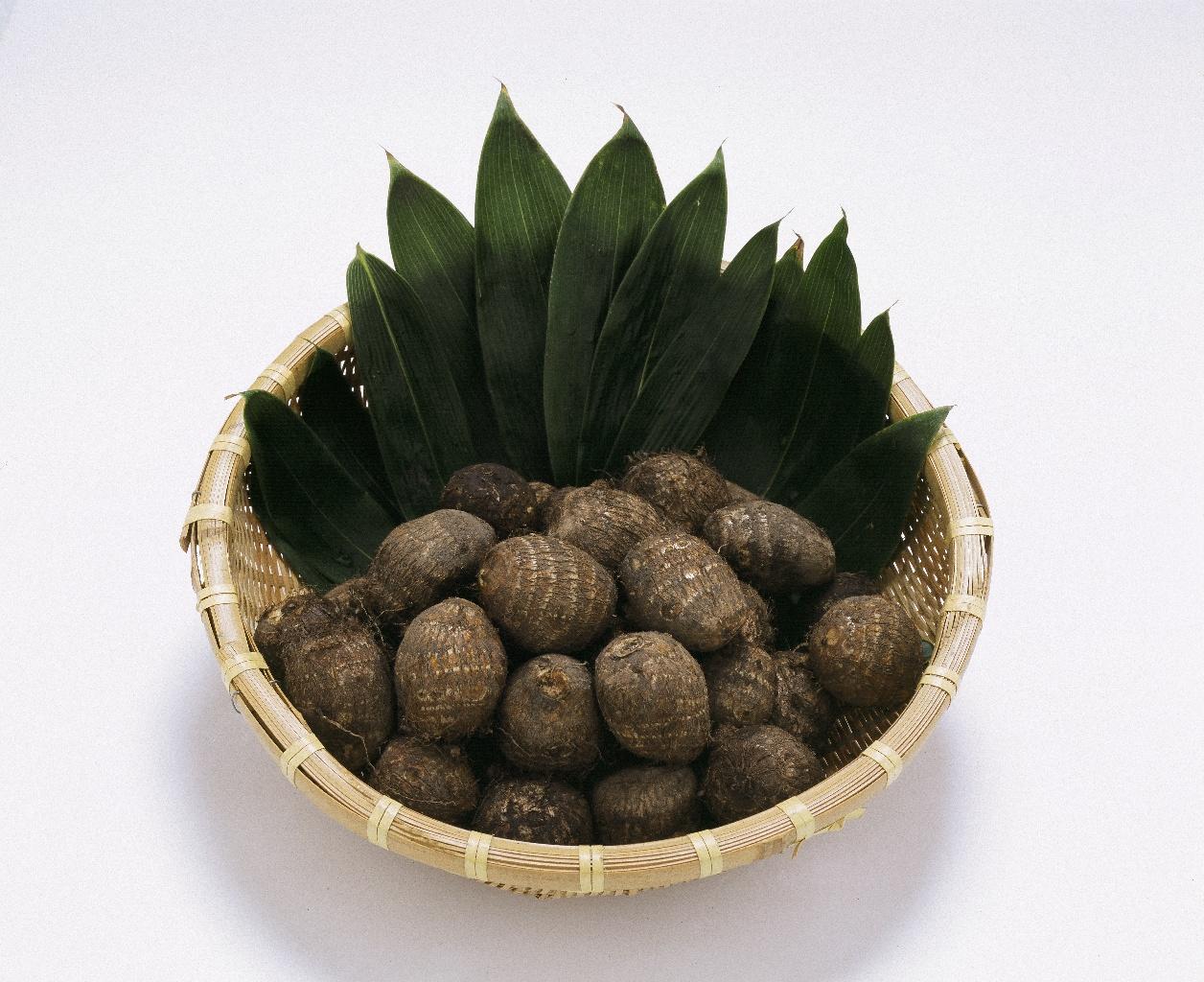Kamisho Satoimo
| Registration Number | 43 |
|---|---|
| Name of the GI | Kamisho Satoimo,Kamishō Satoimo |
| Class | Vegetables/ Cereal grains/Pulses |
| Date of Protection | 2017/11/10 |
| Producing Area |
Fukui Prefecture
Kamishō District, Ōno City (As of June 30, 2017, the official administrative district name is: Kamishō Village, Ōno City, Fukui Prefecture) |
| Applicant - Name and Address | Fukuiken Agricultural Cooperative, 3-2-18, Oote, Fukui City, Fukui Prefecture |
"Kamisho Satoimo" is a native variety of taro called the "Ono- Zairai". It is characterized by its very firm and dense flesh that does not easily fall apart while boiling and which has a unique glutinous texture.
Though seed taros are selected by individual local farmers, the line of "Kamisho Satoimo (Ono- Zairai)" is maintained through the rigorous method of selecting superior seed taros.
Due to their characteristics, "Kamisho Satoimo" are highly esteemed in the marketplace, and they fetch high prices during the peak shipping period from October to December.
"Kamisho Satoimo" are "Ono- Zairai" cultivated in the specified producing area.
The producers' group has its own shipping standard, and does not ship taros to market unless they meet the standard regarding sufficient dehydration and the absence of blemishes, decomposition, disease, etc. Taros not up to the standard can be provided to food processors, if they are neither markedly blemished nor decomposing.
The producing area of "Kamisho Satoimo" is located in northeast of Fukui Prefecture, and is surrounded by Mt. Haku-San (1) and Mt. Arashima and other mountains with an elevation of over 1,000m. It is an alluvial fan formed by sediment flowed from these mountains. The well-drained sandy loam soil is favorable for growing taro.
In addition, during the growing season of "Kamisho Satoimo" from April to November, temperature gap between daytime and night-time is large as the result of the unique micro-climate of the basin. This gap creates conditions that facilitate the translocation of the starch produced during daylight hours, leading to high-quality taro with a high starch content that do not easily fall apart while cooking. The region is blessed with favorable geographical conditions, including abundant water resource from the Kuzuryu River (2) and Mana River, facilitating irrigation in summer.
The genesis of "Ono- Zairai" is not certain, and the line was originally diverse because local farmers cultivated individually inherited lines for household use. However, the Okuetsu Agricultural Development and Extention Center organized the selective breeding of "Ono- Zairai" in the Kamisho during 1972-1974. This resulted in the selection of the high-yielding "Kamisho Satoimo (Ono- Zairai)" line.
Selection of superior taro lines has continued ever since, thus today a line with characteristics has been maintained for over 30 years.
In this way, maintenance of the "Kamisho Satoimo (Ono- Zairai)" line is being managed in producing area. Local geographical conditions and the local climate are factors that further raise the varietal characteristics of "Kamisho Satoimo."
- Mt. Haku-San: it has an elevation of 2,702m. Located in the Hakusan National Park in the Hokuriku region, it is designated as one of the "One Hundred Famous Japanese Mountains" and is also regarded as one of Japan's "Three Holy Mountains."
- The Kuzuryu River: It is a river flowing through the Reihoku region of Fukui Prefecture. Its name means that it is like a "dragon with nine heads". Many myths and legends have been told about it since ancient times.


